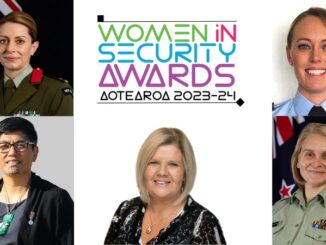
New Zealand Police Senior Sergeant Claire Bibby recently received the Australasian Council of Women and Policing Award for Excellence in Research for Improving Law Enforcement for Women. In this article she shares insights from her award-winning research paper.
When Resolution 1325 – Women, Peace and Security was adopted by the UN Security Council in 2000, it was the first time the international community recognised the experience and impact of conflict on women and the contribution women make in the decision-making process for peace and security.
At the time, the UN released a media statement outlining the importance of communication to implement the resolution and the role of women as leaders – not victims – in the peace and security discussion.
Police have a crucial role in maintaining peace and security, however international research reveals the patriarchal institutions of policing and the military are considered one of the greatest inhibitors to implementing resolution 1325.
Since the resolution was implemented, a wide range of studies in women, peace and security have been undertaken with recommendations to redress gender imbalance. A global study commissioned by the UN, Preventing Conflict, Transforming Justice, Securing the Peace (2015), for example, points to growing evidence that states with higher levels of gender equality (political, social and economic) are less likely to resort to use of force with other states.
In 2016, UN Women and the Government of Japan co-hosted the first Asia-Pacific Regional Symposium on National Action Plans for Women, Peace and Security in Bangkok. The symposium recognised that in the Asia-Pacific region, in addition to armed conflict, there are conflicts associated with violent extremism, the effects of climate-change and weather related events, and population displacement.
Enjoying this article? Consider a subscription to the print edition of Line of Defence Magazine.
The subsequent symposium report recognises that the root causes of such conflict stem from gender discrimination and inequality, and that by including women in conversations and decision-making, it’s possible to “prevent violent extremism, promote a culture of tolerance, enhance disaster preparedness and mitigate the effects of climate change.”
It’s incumbent on police (and military) providing aid in the Asia-Pacific to recognise that gender discrimination occurs when peace and security communications are between men and exclude women. By excluding women’s participation, missions are compromised.
My study brings a focus to the significant role of New Zealand policing in the Pacific. Many of the small island states in the Pacific don’t have a military and reply on police for security. The means countries like New Zealand, who provide police as mentors and trainers to police in the Pacific and other parts of the world, have an important role to play in regional and international security, and that police communication with diverse members of all communities, inclusive of women, is critical to that role.
The study researches the NZ Police approach to implementing resolution 1325 in the Asia-Pacific region. It focusses on police communication between people of the same and different gender and examines the role of police communication in enabling the voice of women to be heard in decision-making to prevent conflict, during conflict and post conflict.
The research considers the relevance of gender to policing, how UN Security Council resolutions are communicated and what enables good communication between genders.
The study highlighted barriers, resistance and impediments confronting police working internationally, when communicating or attempting to communicate with people of a different gender to their own in matters relating to peace and security, and strategies to overcome these.
The study identified the importance NZ Police place on presenting a professional image when communicating with people, including people of a different gender to their own, and identified the role of imagery in communication strategies and the way it can contribute toward the implementation of resolution 1325.
The research argues that communication strategies are crucial in achieving implementation of resolution 1325 and that getting the imagery right in police communications will positively contribute towards operationalising the resolution.
The most rewarding aspect of the research for me was pulling together the knowledge, skills and experiences of men and women who police internationally into a communication strategy that enables key messages to be directed to specific audiences in a cultural context.
It’s about visible leadership and positioning men and women in policing to achieve their Women, Peace and Security objectives.








